Share on social
Highlights
Pricing is a powerful psychological trigger that influences how customers perceive value, make purchase decisions, and develop loyalty to a brand. Every stage of a product’s pricing cycle — from Regular Pricing to Promotions, Markdowns, and Clearance — shapes shopper behavior and impacts overall profitability. A well-executed Lifecycle Pricing Strategy, informed by Lifecycle Forecasting, helps strike the right balance between competitive pricing and profit margins. Understanding Consumer Psychology throughout this process is crucial to optimizing pricing decisions and driving long-term success.
That’s where AI-based Price Optimization comes in. By analyzing demand elasticity and sales data, AI helps retailers make smarter pricing decisions that drive sales, protect margins, and reinforce brand trust.
In this blog, we’ll explore how AI enhances pricing strategies across different stages of the product lifecycle, ensuring retailers stay competitive while maximizing revenue and customer loyalty.
Regular Pricing Psychology
A product’s Regular Price shapes how customers perceive its value. A product that’s priced too low may raise doubts about quality, making shoppers question whether it’s truly worth purchasing. On the other hand, if the price is too high, customers are more likely to hesitate, seek alternatives, or wait for a discount before committing to a purchase.
The moment a shopper sees a price, their brain makes instant, subconscious judgments about the product’s quality, value, and desirability. This decision-making process is driven by cognitive biases that influence whether they move forward with a purchase or walk away.
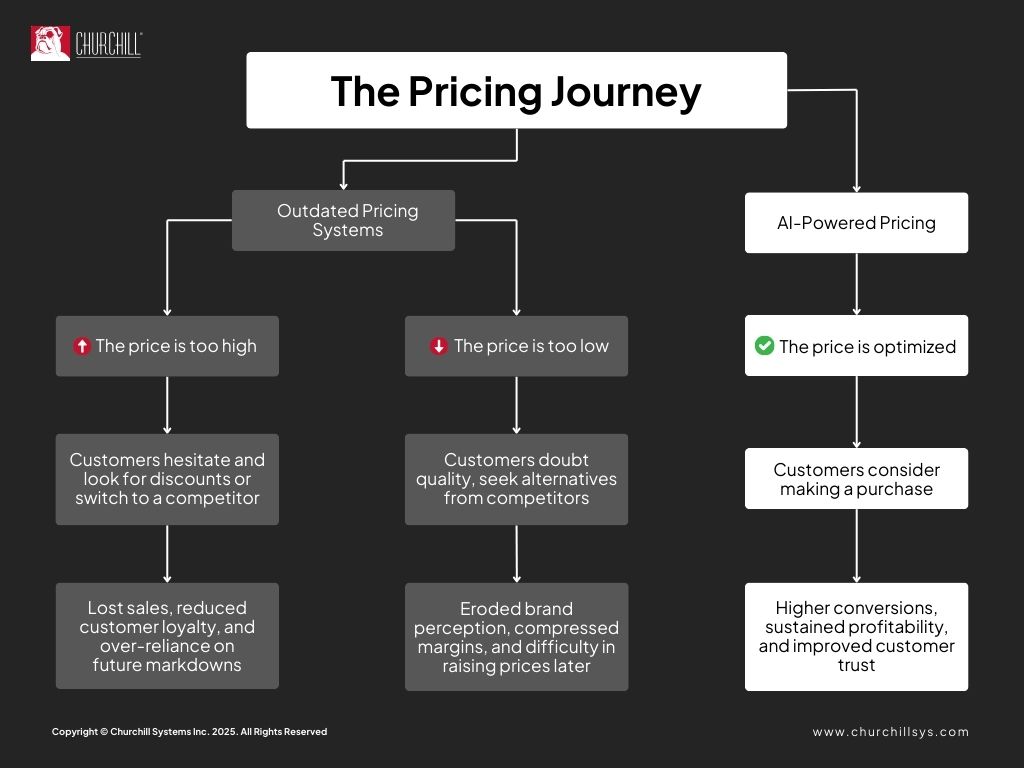
How AI Helps:
- Recommends optimal regular pricing that reflects perceived value, ensuring prices are neither too high to deter purchases, nor too low to raise quality concerns.
- Forecasts demand changes allowing proactive pricing adjustments that keep prices competitive and aligned with customer expectations.
How Promotional Pricing Drives Urgency and Demand
Promotional Pricing isn’t just about lowering prices — it’s about shaping how customers respond to deals and discounts. Discounts are a powerful psychological trigger. Customers don’t just see price reductions; they feel them — through perceived value, urgency, and trust in a brand’s pricing strategy. But not all promotional strategies yield the same results.
By leveraging AI, retailers can create promotions that feel exclusive rather than expected, reinforcing perceived value. Strategic discounting taps into psychological triggers like urgency, price perception, and loss aversion — encouraging customers to act without undermining long-term brand trust.
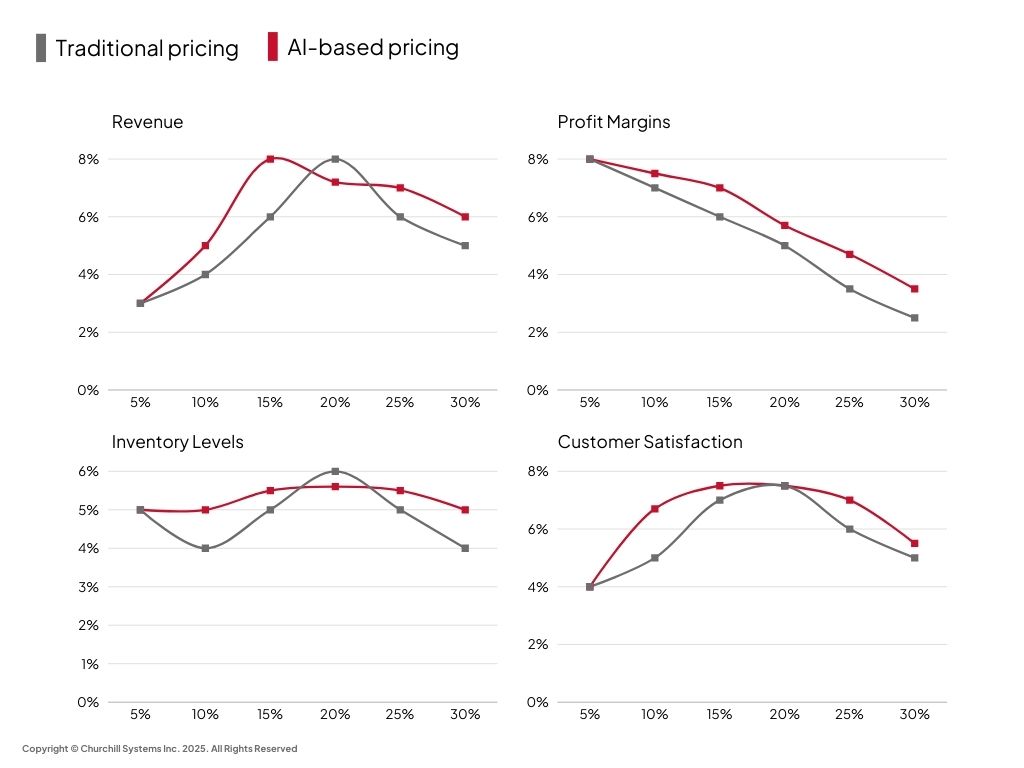
How AI helps:
- Limited-time promotions create a sense of urgency that pushes customers to act. AI optimizes the timing and depth of discounts to maximize this psychological trigger — driving sales while avoiding margin erosion.
- AI predicts future customer behavior and demand elasticity to apply the right level of discounting — triggering purchase motivation without harming perceived quality.
- Shoppers are more sensitive to potential lost opportunities than the purchase itself. AI helps retailers craft discounts that play into this bias, ensuring promotions feel like exclusive opportunities rather than routine markdowns.
- Inconsistent promotions create doubt, causing customers to delay purchases in anticipation of better deals. AI creates structured, data-driven pricing strategies that leverage promotions to stimulate demand.
Lifecycle Pricing Strategy ensures promotional events are aligned with customer psychology, creating urgency while maintaining brand value.
Markdown Optimization – The Scarcity Effect & Smart Discounts
In retail, Markdown Optimization is crucial for balancing inventory management and profitability. Traditional markdown strategies often rely on broad percentage cuts, which may not align with actual demand and inventory levels. AI-driven Markdown Optimization addresses these challenges by forecasting full season sell-through to predict and recommend the optimal timing and depth of markdowns.
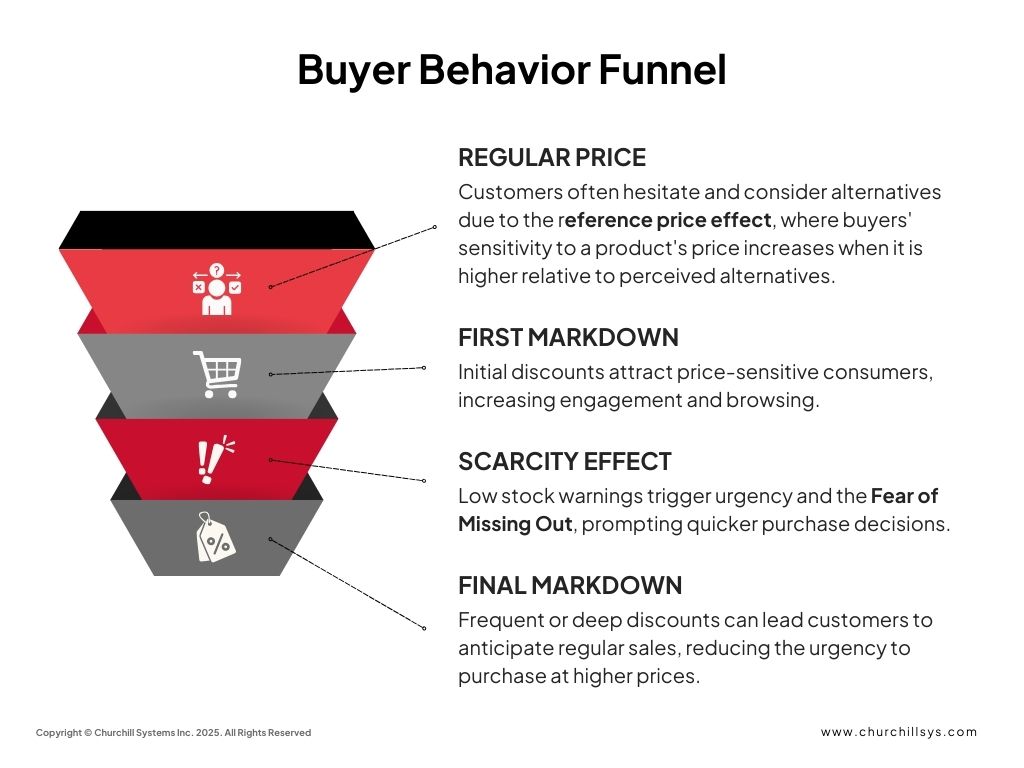
How AI Helps:
- AI analyzes demand and sales trends to recommend when markdowns are most likely to drive sales without unnecessary profit loss.
- AI leverages historical sales trends to recommend price points that feel like a great deal without devaluing the product or the brand.
- By continuously forecasting demand and monitoring inventory levels, AI can recommend markdown price adjustments to optimize revenue and sell-through rates with a specific frequency.
Clearance & Liquidation – Moving Inventory Without Devaluing Products
Clearance pricing is a double-edged sword. While deep discounts can drive immediate sales, they can also signal desperation, leading to long-term brand perception issues. Shoppers are quick to recognize clearance patterns, and if sales events are too frequent or aggressive, they may begin to associate a brand with low value.
Clearance and Liquidation strategies must strike a careful balance between moving excess inventory quickly and maintaining the integrity of the brand. Simply slashing prices may attract bargain hunters, but it can also condition regular customers to delay regular priced purchases in anticipation of further discounts.
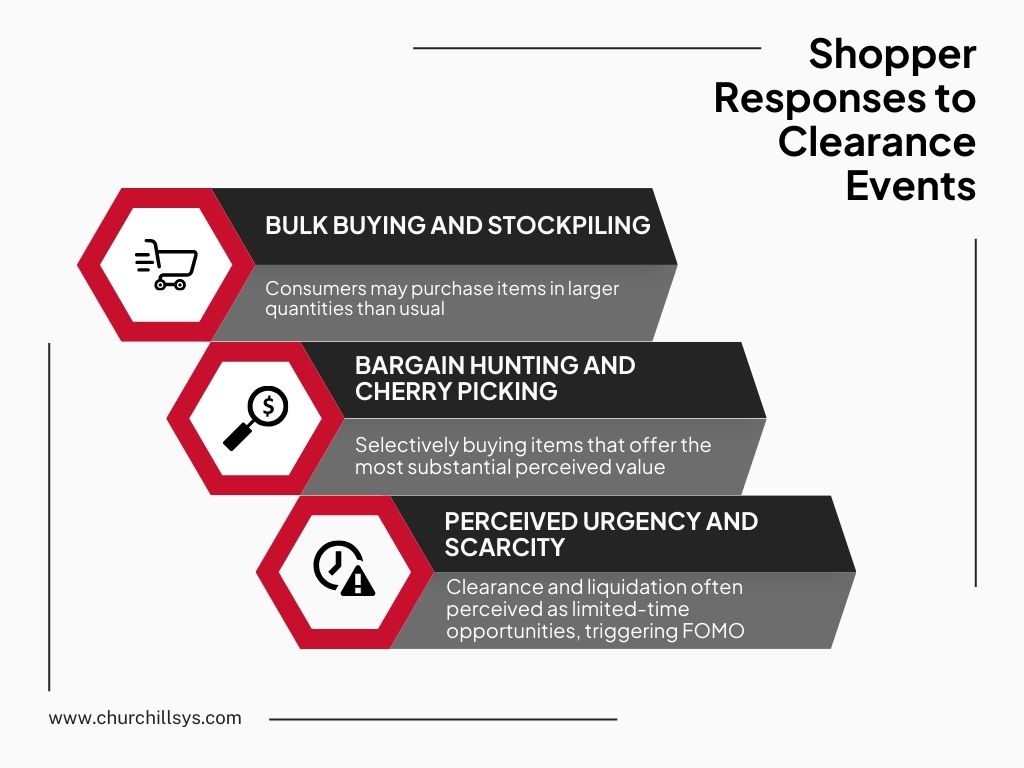
How AI helps:
- AI ensures clearance pricing is timed and structured to create a sense of urgency without signaling desperation. This prevents long-term damage to brand image.
- AI helps retailers recover as much value as possible by determining the best pricing tiers based on historical sales and localized purchasing behaviors.
- AI identifies the optimal moment to initiate clearance events, ensuring retailers don’t mark down too soon and lose potential revenue.
Well-structured Clearance planning is a core part of Lifecycle Pricing and Consumer Psychology, ensuring that even final markdowns work in favor of customer perception rather than against it.
How AI Balances Cannibalization and Halo Effects
Every pricing decision creates psychological ripple effects that extend beyond a single product. Without AI, retailers struggle to measure these effects, leading to conflicting sales patterns, excessive revenue loss, and missed opportunities for complementary sales growth.
Consumers instinctively compare prices, and a discount on one product can unintentionally make a full-priced alternative seem overpriced, causing a shift in purchasing behavior Cannibalization. On the other hand, well-placed discounts can create a “feel-good” effect, making shoppers more likely to add complementary items to their cart Halo effect. AI helps retailers track these behaviors, ensuring that promotions enhance overall revenue rather than simply shifting sales from one product to another.
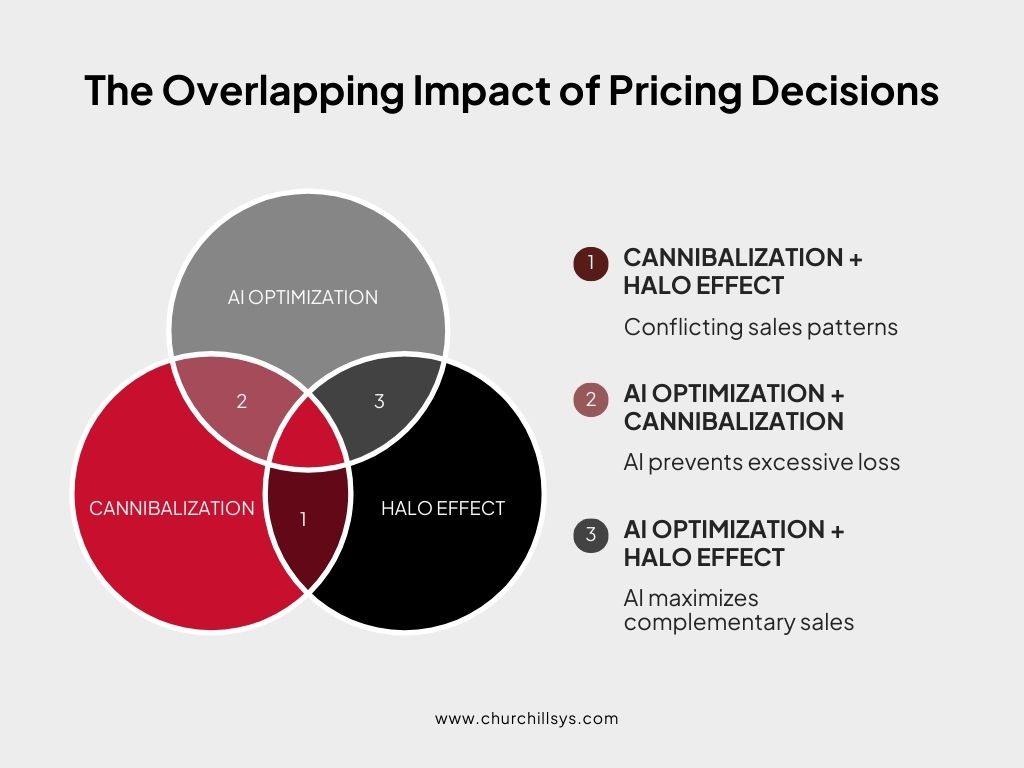
How AI Helps:
- Detects pricing conflicts before they erode profits.
- Identifies cross-category pricing relationships to maximize halo effects.
- Helps retailers find the sweet spot between pricing strategies.
Integrating these insights into a Lifecycle Pricing Strategy ensures that pricing decisions drive growth across the full product range rather than causing internal competition.
Conclusion
Poorly structured pricing can lead to consumer hesitation, lost sales, and brand devaluation, while strategic pricing reinforces value and builds loyalty. AI-driven Price Optimization eliminates the guesswork, ensuring that every price point aligns with how consumers think, feel, and respond to pricing cues.
With AI, retailers can set prices that feel fair, create urgency without eroding trust, and encourage repeat purchases — all while optimizing margins and inventory flow.
By embedding Lifecycle Pricing and Consumer Psychology principles into every stage — from regular pricing to clearance — retailers can maximize revenue potential and strengthen long-term customer relationships.
Want to see how Churchill’s AI-powered pricing solutions can help you tap into consumer psychology and drive smarter sales?
Book a call and discover how 35 years of AI-driven retail experience can elevate your strategy today.